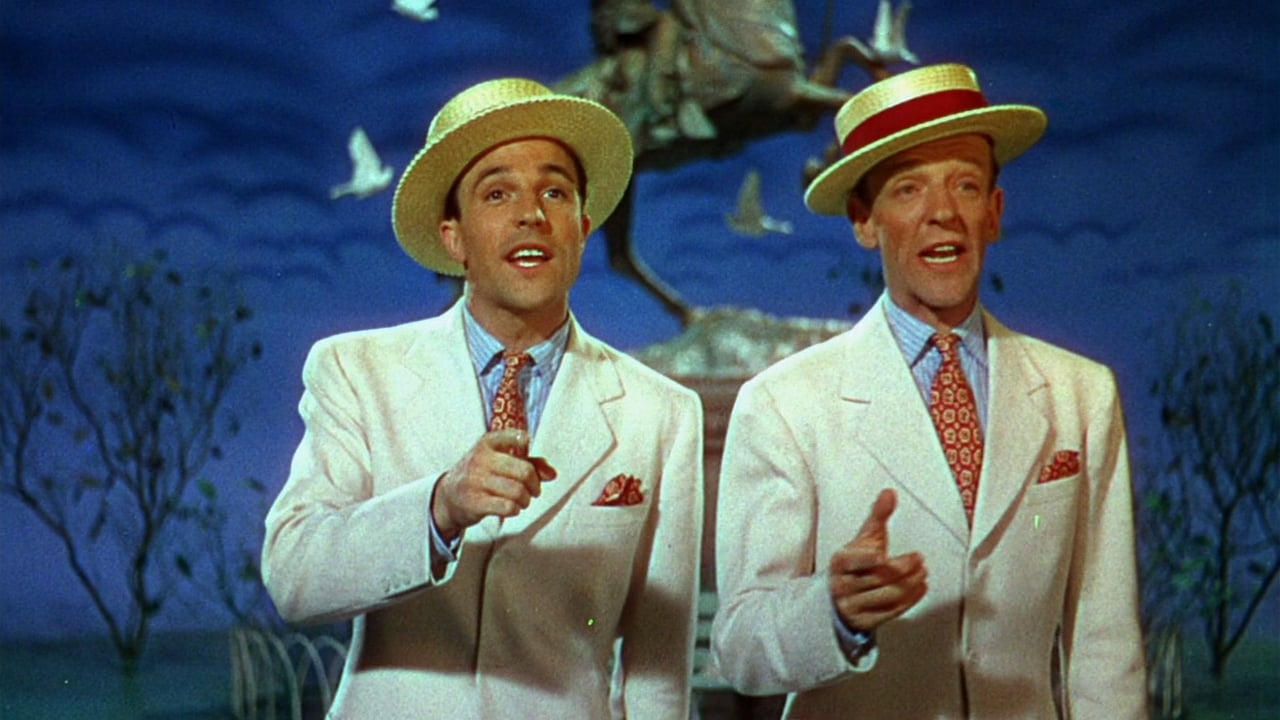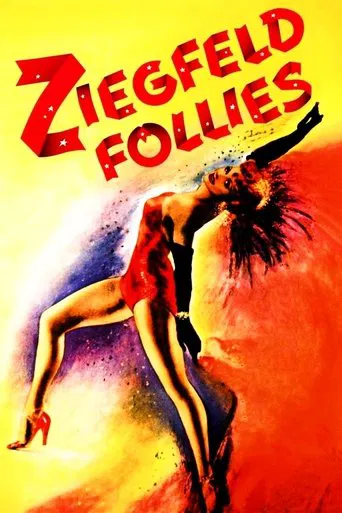

Overrated and overhyped
... View MoreGood concept, poorly executed.
... View MoreClever, believable, and super fun to watch. It totally has replay value.
... View MoreThis movie feels like it was made purely to piss off people who want good shows
... View MoreThis is one of the films that was great in its time, but doesn't hold up well. Not because the performances aren't great -- they are. But most of us go to a film to see a particular movie star or two, and here you have to sit through well over a dozen stars performing specialty numbers just to get to the particular stars you want to see. Nevertheless, this film does provide us with an opportunity to see some of the great MGM stars of the mid-1940s.The film opens with William Powell reprising his role as Florence Ziegfeld...but this time in heaven. He's looking down thinking about how he would put together another extravaganza if he was still earth-bound. There's a clever claymation sequence with Powell reminiscing. And then he decides to open his new production with Fred Astaire with "Bring On Those Beautiful Girls" (which includes several stars, including a lovely Lucille Ball), which is a production number that I imagine the real Ziegfeld would have loved.There's an impressive water ballet by Esther Williams. Next up is an unfunny comedy segment about telephones with Keenan Wynn, who clearly was better is somewhat dramatic roles. The mostly forgotten comedy actor Victor Moore and character actor Edward Arnold do a mildly humorous skit, which seems to mostly be about lawyers and being jostled on the subway; it's a variation on a common burlesque routine (more frequently featuring a simpleton being egged on to make noise in a quiet zone). Free Astaire and Lucille Bremer do a wonderful dance number, which is odd in that he plays a jewel thief; the number is horribly over-orchestrated (a problem throughout the film). There is a comedy routine by Fanny Brice (and Hume Cronyn and William Frawley) about winning the Irish Sweepstakes; it is a rare opportunity to see the once immensely popular Fanny Brice ("Funny Girl"), a true Ziegfeld star. If you like Lena Horne, she does a beautifully staged number, although I found it to be rather racist. The highlight for many (including me) will be the Red Skelton performance entitled "When Television Comes", popularly known as "Guzzler's Gin"; this routine, more than any other, brought Skelton fame; however, it clearly shows one of the limitations of the film: this routine used to put audiences into hysterics, but here it plays rather flat without laughter and applause...and, this is supposed to be a stage show, so those 2 elements are missing, and putting those ingredients in would have made for a much more realistic experience. Another Fred Astaire number, Chinese-themed, is hardly his best dancing, but it is the most beautifully photographed and designed part of the film; the colors and textures are stunning; and it is unique. I didn't care for the Judy Garland number; it just seemed shallow. Fred Astaire is back AGAIN with a light-hearted dance number with Gene Kelly about their friendly competition.There are a couple of problems with this DVD. First, the film really needs to be restored, The colors are no longer true...for example, too much red in the skin tones.A second problem, at least for me, is that there is no plot. None at all. It's "just" a succession of musical and comedy numbers.Nevertheless, despite it faults, this is a rather remarkable film highlighting as it does the great MGM stars of the time. Ziegfeld would have been proud.
... View MoreWhen you open up a movie musical revue with William Powell repeating his "The Great Ziegfeld" role of Flo ("What mother calls a boy Florenz?", to quote Kay Medford in "Funny Girl") imagining from heaven what he could do in cinema with his glorious glorification of the American girl. He brings out Fred Astaire, who ironically never appeared on Broadway in the "Follies" but was a stage star at the time none the less, and the "Bring on the Beautiful Ladies" is so gloriously filmed in Technicolor, the show is off to a sizzling start, whip cracking when all of a sudden Lucille Ball appears. Then, comic deadpan Virginia O'Brien burlesques it with her search for "those glorious men". Comic routines, operetta numbers and a few big song and dance numbers follow, many mediocre but a few classic.The highlights for me are Fred joining Gene Kelly for "The Babbit and the Bromide", Lena Horne with "Love" and "This Heart of Mine" with Lucille Bremer whom Astaire had scored artistically with, if not financially with, in the underrated "Yolanda and the Thief" (actually filmed after this). An Asian themed number with the two of them is not as successful, and Judy Garland's "The Great Lady Has an Interview" is unfortunately extremely dated and sometimes rather aggravating. Moments of it shine, but it takes a long while for the number to get rolling.The comedy routines are not for today's audiences unless they are into nostalgia, as I am. Red Skelton's "Guzzler's Gin" will bring on as much of a gag reflex for some as the gin did for him, but there are moments of it that are truly hysterical. "The Lottery Ticket" routine features Fanny Brice in her only film after "Everybody Sing" and teams her with dramatic Hume Cronyn and funny man William Frawley. "Pay the Two Dollars" is the nadir of the comic routines, even if it has the adorable Victor Moore, another veteran star of the Broadway musical.The controversial "There's Beauty Everywhere" had director Vincent Minnelli exclaiming, "You Can't Direct Bubbles!", and sure, that is definitely true, but it is gorgeous to watch, and Kathryn Grayson sings it beautifully. Ms. Grayson once told a story to an audience (where I was present) about making this number where she explained how she was crying after watching the dailies and all of a sudden heard the buzz-saw voice of Katharine Hepburn telling her that it wasn't all that bad. And that it isn't, certainly not something you would have seen in an actual "Ziegfeld Follies", but worthy of MGM's Freed unit, and a camp classic to boot.
... View MoreLet's give this movie credit for one thing: it doesn't claim to be anything other than what it is: an unconnected series of musical numbers and comedy sketches, meant to honor the late Florenz Ziegfeld. So, if that is what you want, terrific. If a particular scene bores you, you can fast-forward through it without missing anything.The strength of the film was the wise decision to let Fred Astaire appear in more than one number. His dancing and on-screen personality are always delightful, because his joy in performing is obvious and catching. The highlight of the movie comes in the last performance, when he performs a wonderful tap-dance and singing number with Gene Kelly. They are so palpably having a good time that you almost forget how dreary so much of the rest of the film was! The comedy sketches are absolutely the most miserable and un-funny things ever captured on celluloid. Painful, painful, painful. Good grief, do they drag on forever. Keenan Wynn performs an old Vaudeville sketch in which a man cannot get the operator to put his call through to a nearby number, while a parade of other characters have no problem putting calls through to the most obscure and distant locations on the planet. Potentially funny, yes? Well, yes, when Lou Costello did it two years earlier in "Who Done It" - that was the definitive version of the sketch. It is one of the funniest things Lou ever did. Why in the world would MGM have Wynn try to do the same sketch - he tries very hard to mimic Lou Costello's facial contortions and grunts and squeals of frustration - but it stinks.And the "Pay him the two dollars" routine with Victor Booth and Edward Arnold - well, if this represents Vaudeville at its best, then I guess I don't regret not having been alive to see it after all. And Victor Hume takes a rare stab at comedy too; he appears to be trying to mimic Shemp Howard, and none too well at that.The musical numbers in general are what you would expect from MGM - lavish, expensive-looking, and otherwise spectacular.While it may not be everyone's cup of tea, I actually enjoyed the claymation at the beginning of the movie. One of the most bizarre and surreal scenes in any MGM movie ever has to be the 45 seconds of Eddie Cantor, in glorious claymation, and in blackface, for goodness sake, singing "If you knew Susie". It is hilarious, and the claymation really captures Cantor's performance style to a Tee - for comparison, I strongly suggest you watch "A Few Minutes with Eddie Cantor" (1923, in sound) on Youtube.And speaking of classic Hollywood racial insensitivity, a long "drama in pantomime" features Fred Astaire and as a Chinese, stalking another white actress pretending to be Chinese. You really have to shake your head. And are Fred and Gene dancing in front of a statue of Civil War General Nathan Bedford Forrest? Perhaps not, but he sure looks Confederate....Like I said, Ziegfeld Follies gives you get exactly what it claims to give you. But have the fast-forward ready.
... View MoreLet's start with the negatives; arguably the weakest songs ever written by les freres Gershwin and Harry Warren; 'comedy' sketches that are just not funny - even in the mid forties I doubt anyone would have found the Keenan Wynn sketch funny, Red Skelton just about gets away with his Guzzler's gin routine, whilst Victor Moore and Fanny Brice respectively verge on the embarrassing. However, what we DO have is the brilliant Fred Astaire who shines in all four of his numbers. Astaire can make anything or anyone, a song, a dance partner, look good and he is called upon to do both in The Babbit And The Bromide, enhancing one, The Gershwin's weak song and two, Gene Kelly; while he actually makes Kelly look good he still leaves him for dead. Another plus is Virginia O'Brien, who, like Astaire, enhanced everything in which she appeared. The Harry Warren-Arthur Freed number Beauty Is Everywhere is total garbage and it doesn't help having Kathryn Grayson perform it - to be fair to her she knew it was garbage and initially refused to sing it. Even Judy is mediocre in her only appearance. Why they didn't use Sinatra, who was at the studio, is a mystery, so what we're left with is Astaire and O'Brien but luckily they are worth the price of admission alone.
... View More